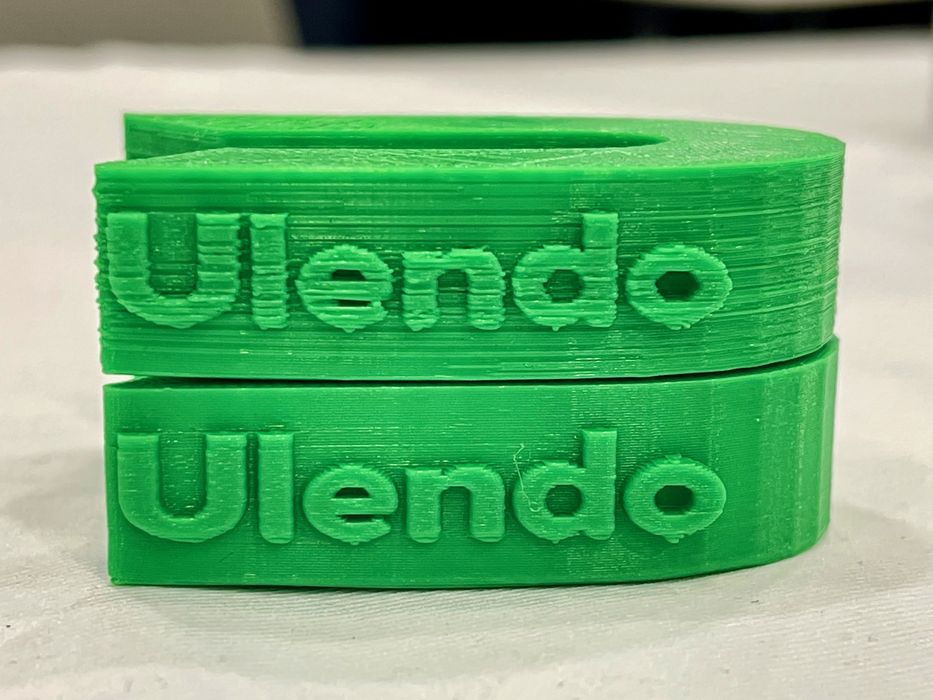
I had an interesting chat with Ulendo this week.
You may not have heard about Ulendo, as they are a new startup software company in the 3D print space. We are one of the few publications to write about them, having first encountered them a couple of years ago.
What do they produce? It’s actually firmware that increases print quality; the company does not produce any hardware, although they frequently work with 3D printer manufacturers. Their firmware provides advanced vibration compensation.
Vibration is the devil in FFF 3D printers. As the toolhead moves around it sometimes doesn’t get exactly to where it’s supposed to go due to momentum and vibration effects. This can affect print quality, model geometry and even print reliability. Even worse, the problem escalates as the print speed increases.
That’s going to be an issue for many 3D printer manufacturers as our world shifts toward higher speed 3D printers. Using more advanced firmware, some manufacturers have issued low cost 3D printers that can achieve speeds as high as 600mm/s, around 5X faster than typical machines.
These manufacturers sometimes use Klipper, and open source firmware that provides some of the features required to avoid vibration at high speeds. Ulendo’s firmware does all that, but includes many more features to achieve both high print speeds and increased quality.
Wait, more features? Isn’t it just “vibration”? Yes, vibration is an enemy, but it turns out there are many forms of vibration that manifest in different parts of the machine.
An example issue is the use of vibration compensation using a bedslinger-style 3D printer. This type of device moves the print surface as Y-axis. In other words, the print itself slides forwards and backwards rapidly during printing.
As the print rises higher, there is added vibration from the print itself! It sways back and forth, which varies as the print height increases. This makes true vibration compensation truly challenging on that style of 3D printer.
Ulendo provided some of their specialized code to Marlin, so that it could be included in recent releases of that popular 3D printer firmware package. This puts Marlin at a similar level of functionality to Klipper.
However, Ulendo explained that they did not provide ALL of their functions to Marlin. It seems that there are plenty of more advanced functions that can increase print quality at high speed beyond the free open source firmware packages. Should a 3D printer manufacturer want to unlock them, they can work directly with Ulendo.
For example, professional manufacturers might require advanced corner rounding capabilities to meet the requirements for their part production. They could use Ulendo’s firmware to overcome high speed printing dilemmas of that nature.
There’s an intimate link between the hardware and the software when it comes to high speeds. Ulendo’s VP of Sales, Jay Murray, explained:
“Some 3D printer manufacturers try to make printers faster by changing the hardware, but that isn’t lower cost. Software can do this instead, but we can help determine the best hardware configuration to match the software. Many times we’ve seen that the hardware is a limitation to high speed 3D printing.”
We talked about how the introduction of high speed 3D printing is affecting the 3D printer market. There are now a number of very competent low-cost devices that can print quality models at very high speeds. In some cases these can rival the results obtained previously with much more expensive professional equipment.
Ulendo Founder Chinedum Okwudire explained:
”Those not adapting will lose out. If it’s the same or lower cost for higher speed, why would someone buy it?”
As a result of this shift, many manufacturers of professional 3D printing equipment have become quite nervous about their future, and fear their market share could collapse. Apparently several have already reached out to Ulendo to help rework their equipment to compete with low cost high speed equipment.
The next few years should be quite interesting as the market has been turned upside down by the introduction of high speed capabilities.
What’s next? It seems that Ulendo has been developing a solution for metal 3D printing with the LPBF process. We could see a heat distortion solution from them at some point in the future.
All of our 3D printers have a variety of issues, no matter how advanced they may be. However, it appears that quite a few issues can be resolved with advanced software.
Via Ulendo
